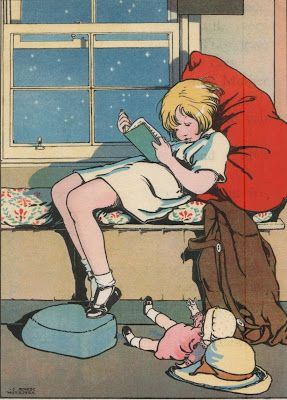Blast from the Past: This entry posted on June 26, 2016, and was re-posted on January 31, 2018. Since this entry was first posted several states have backed out of their commitments to see that kids are taught to read more complex text than in the past. I certainly understand their fear of having to tell teachers that teaching children to read at "their levels" is not such a good idea for the kids. It makes teaching easier admittedly because it means you don't have to teach very much. But what is easier for the teacher is a rip off of the kids. This week working on these issues with a group of educators who are seeing this as an equity issue--because poverty kids, minority kids, second language are usually taught with easier texts than the majority kids get to read. We can do better.
Last week I pointed out that from grades 2-12 it wasn’t necessary to match students to text for instruction to proceed effectively. Research has not been kind to the idea of mechanical “instructional level” criteria like 90-95% accuracy (e.g., Jorgenson, Klein, & Kumar, 1977; Kuhn, Schwanenflugel, Morris, Morrow, et al., 2006; Morgan, Wilcox, & Eldredge, 2000; O’Connor, Swanson, & Geraghty, 2010; Powell, & Dunkeld, 1971; Stahl, & Heubach, 2005; Stanley, 1986).
Language learning doesn’t work that way.
That got lots of response, online and off. Some of it quite angry, too. Although I answered many queries and shout-outs, I thought a little more formal response this week might be in order. Here are some key ideas when thinking about teaching kids to read with more complex text than we might have dared to use in the past:
1. No, an easier text is not more motivating.
Several respondents thought it only common sense that students would be frustrated by harder texts and stimulated by easier ones. I know that feeling. I shared it much of my career until I analyzed the evidence.
One thing researchers have found repeatedly is that student readers tend to select books at their frustration levels for independent reading (e.g., Donovan, Smolkin, & Lomax, 2000). Of course, with really low readers, what else could they choose? But this appears to be the case for the better readers, too. I guess their curiosity about the content of the harder materials outweighs their fear of failure. Looking back, I did a lot of that kind of frustration level reading myself as a boy—not always fully understanding what I read, but learning much from the struggle.
Researchers thought students would lose motivation when reading harder texts (Fulmer & Tulis, 2013). Reality has been more complicated than that. Readers’ motivation does vary across a text reading—but the degree of difficulty doesn’t seem to be the source of that variation.
And, the idea that we want students to be challenged, but not too much—they can miss some specific number of words, but only that number and no more—just hasn’t panned out. When learning and book placement have been studied there has usually been no connection at all or the harder placements have led to more learning (in other words, our relatively easy book matches may be holding kids back, preventing them from exposure to more challenging features of language and meaning).
If we are going to make these decisions based on our imaginings of how children must feel, then not only should we think of how frustrating it might be to struggle with a text that contains many words you don’t know, but we should consider how boring it must be to always deal with content aimed at younger kids who already can read as well you can.
2. No, not all texts need to be at an instructional level.
If one challenges the idea of placing kids in instructional level books to facilitate learning (e.g., guided reading, Accelerated Reader), why is the alternative to only place kids in frustration level texts? The idea that all reading should be at the instructional level is wrong in part because of the inherent notion that all reading experience should be at any particular level. Text difficulty should vary; kids should move across a range of texts from easy to difficult.
In the teaching of most skilled activities (e.g., foreign language, dancing, bicycle racing), the idea is not to protect the learners from harder applications of those skills, but to vary the routines between relatively easy challenges and those that scare and potentially embarrass the learner. If you have any doubt, go learn to do something.
3. No, text level is not the only feature of the learning situation that can be varied.
Not only should texts vary in difficulty, but the amount of help, guidance, explanation, and scaffolding ought to vary, too. When kids are placed in frustration level texts they need greater support than when they are reading instructional level or independent level texts—just the opposite of what many of our instructional routines provide.
I should intentionally place kids in easier or harder text and should add or withdraw support based upon need. When kids are in easy texts, the training wheels can be taken off. When they are in harder texts, as a teacher I need to be prepared to offer greater guidance and support. That means easier texts when reading with 30 kids, and harder texts—certainly beyond the normally prescribed levels—when I’m sitting closely with 6-8 kids and can monitor more closely and intervene more easily.
If your teaching skills are so limited that the only way to protect kids from failure is to keep them always in the shallow water, then so be it. But for most of us, there is a greater range of pedagogical response available that would allow kids to swim often in deeper water without drowning.
4. No, a more challenging text will not disrupt kids’ development of decoding skills.
I heard from some last week that if you placed kids in more challenging texts then they just guessed at words. That might be true if you were to do this with beginning readers, but grade 2 is not beginning reading. Kids should be placed in relatively easy texts initially (grades K-1), texts that have clearly decodable or consistent spelling patterns.
Then when they start taking on a greater range of texts—when they can read a second-grade text, you will usually not see that kind of guessing based only on context. In any event, whatever patterns of reading behavior are elicited by such challenging text matches at that point, they have not been found to slow kids’ reading development or to disrupt their growth in decoding ability from that point. In fact, O’Connor and her colleagues (2010) have not even found it to be an issue with our most struggling readers—those older learning-disabled students who might still be trying to master many of those beginning reading skills.
I understand the concerns and discomfort in putting kids in frustration level materials given all the reading authorities that have told you not to do that. But a careful review of that advice reveals a shocking neglect of studies of doing just that. No one, however, is saying just throw kids into hard text and hope they make it. One wouldn’t do that with beginning readers, and when kids are ready for such immersion tactics teachers have to teach—it isn’t like those routines where you hope the text is easy enough for kids to learn with a minimum of teacher help. And, finally, much learning comes from practice under varied levels of complication and difficulty—just because traditionally you were told all reading instruction should be at the instructional level doesn’t mean that when teaching with more complex text that you should aspire to such uniformity.
References
Donovan, C. A., Smolkin, L. B., & Lomax, R. G. (2000). Beyond the independent-level text: Considering the reader-text match in first graders’ self-selections during recreational reading.Reading Psychology, 21, 309-333.
Fulmer, S. M., & Tulis, M. (2013). Changes in interest and affect during a difficult reading task: Relationships with perceived difficulty and reading fluency. Learning and Instruction, 27,11-20.
Jorgenson, G. W., Klein, N., & Kumar, V. K. (1977). Achievement and behavioral correlates of matched levels of student ability and materials difficulty. Journal of Educational Research, 71, 100-103.
Kuhn, M. R., Schwanenflugel, P. J., Morris, R. D., Morrow, L. M., Woo, D. G., Meisinger, E. B., Sevcik, R, A., Bradley, B. A., & Stahl, S. A. (2006). Teaching children to become fluent and automatic readers. Journal of Literacy Research, 38, 357-387.
Morgan, A., Wilcox, B. R., & Eldredge, J. L. (2000). Effect of difficulty levels on second-grade delayed readers using dyad reading. Journal of Educational Research, 94, 113-119.
O’Connor, R. E., Swanson, L. H., & Geraghty, C. (2010). Improvement in reading rate under independent and difficult text levels: Influences on word and comprehension skills. Journal of Educational Psychology, 102, 1-19.
Powell, W.R., & Dunkeld, C.G. (1971). Validity of the IRI reading levels. Elementary English, 48, 637-642.
Stahl, S. A., & Heubach, K. M. (2005). Fluency-oriented reading instruction. Journal of Literacy Research, 37, 25-60.
Stanley, N.V. (1986). A concurrent validity study of the emergent reading level. Unpublished doctoral dissertation, University of Florida.







Comments
See what others have to say about this topic.